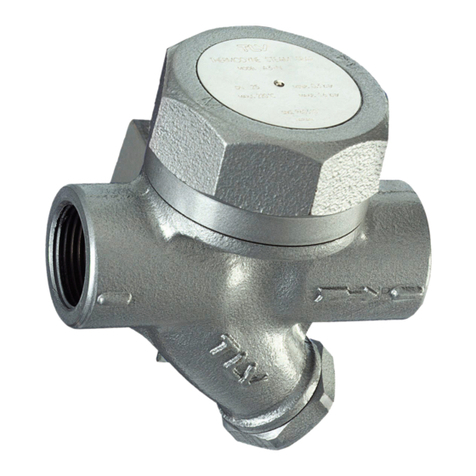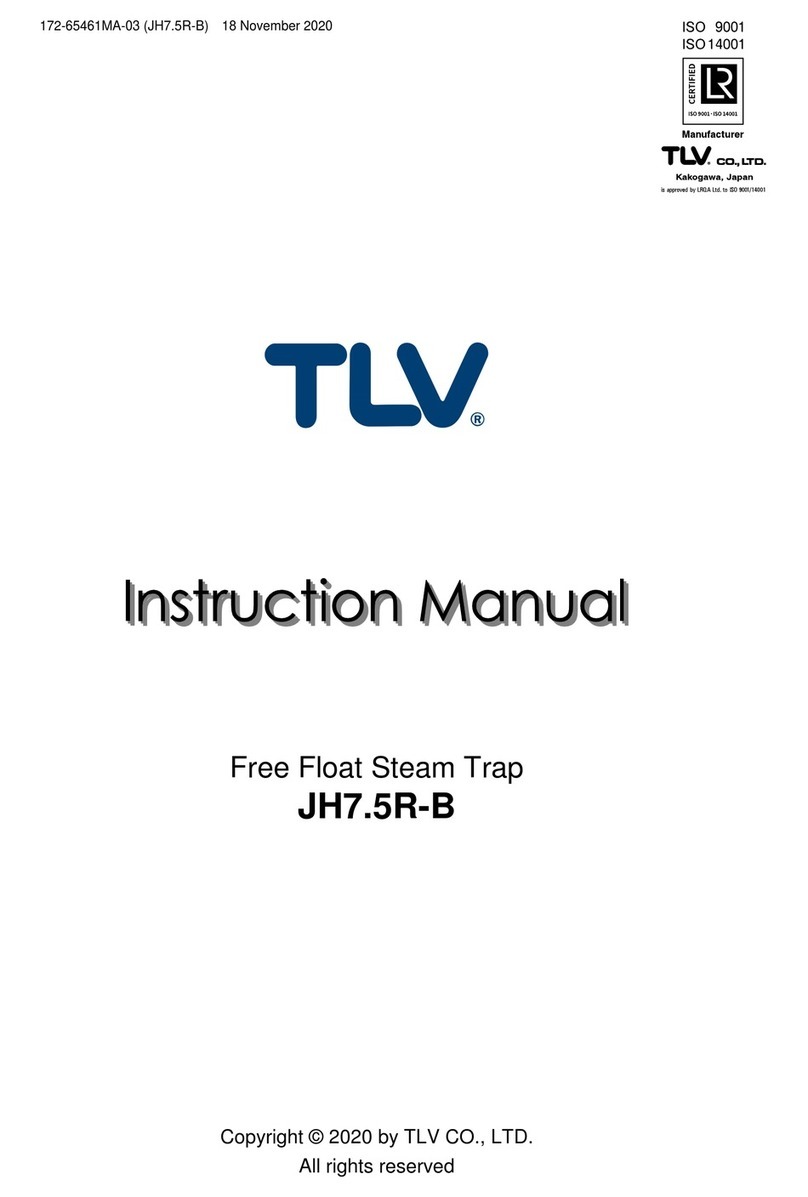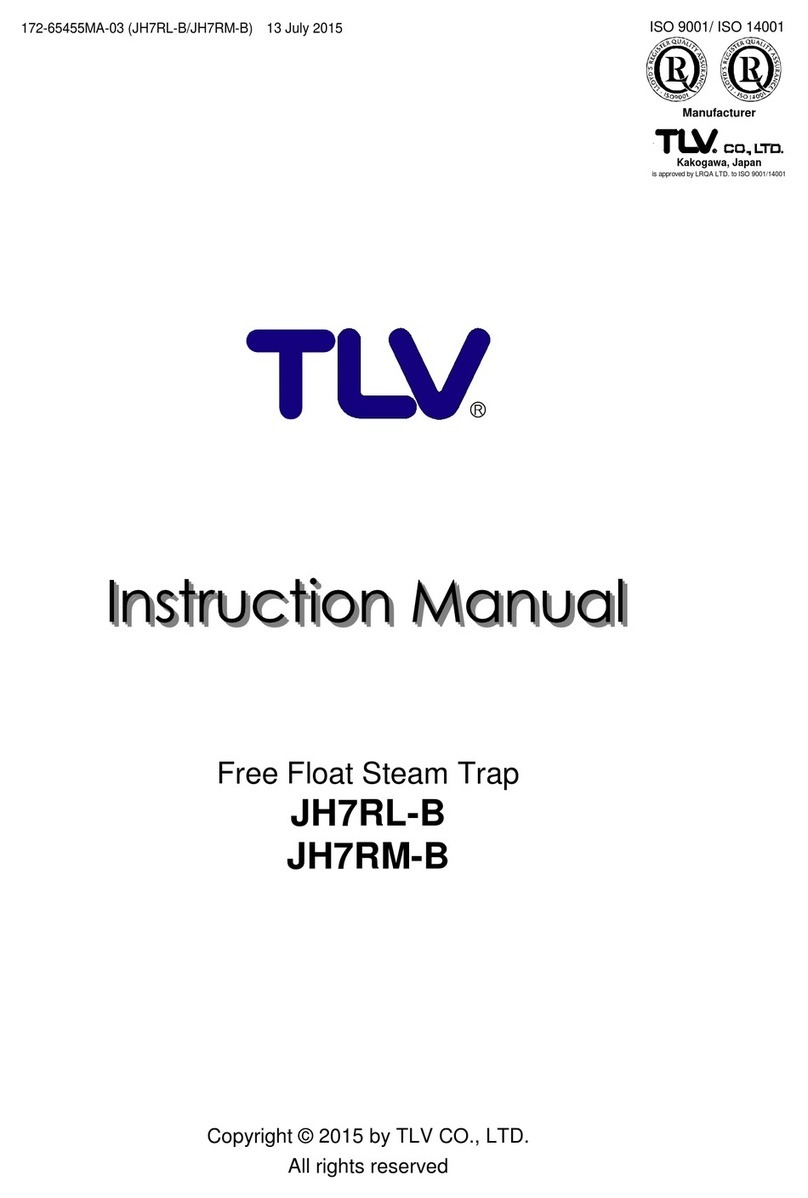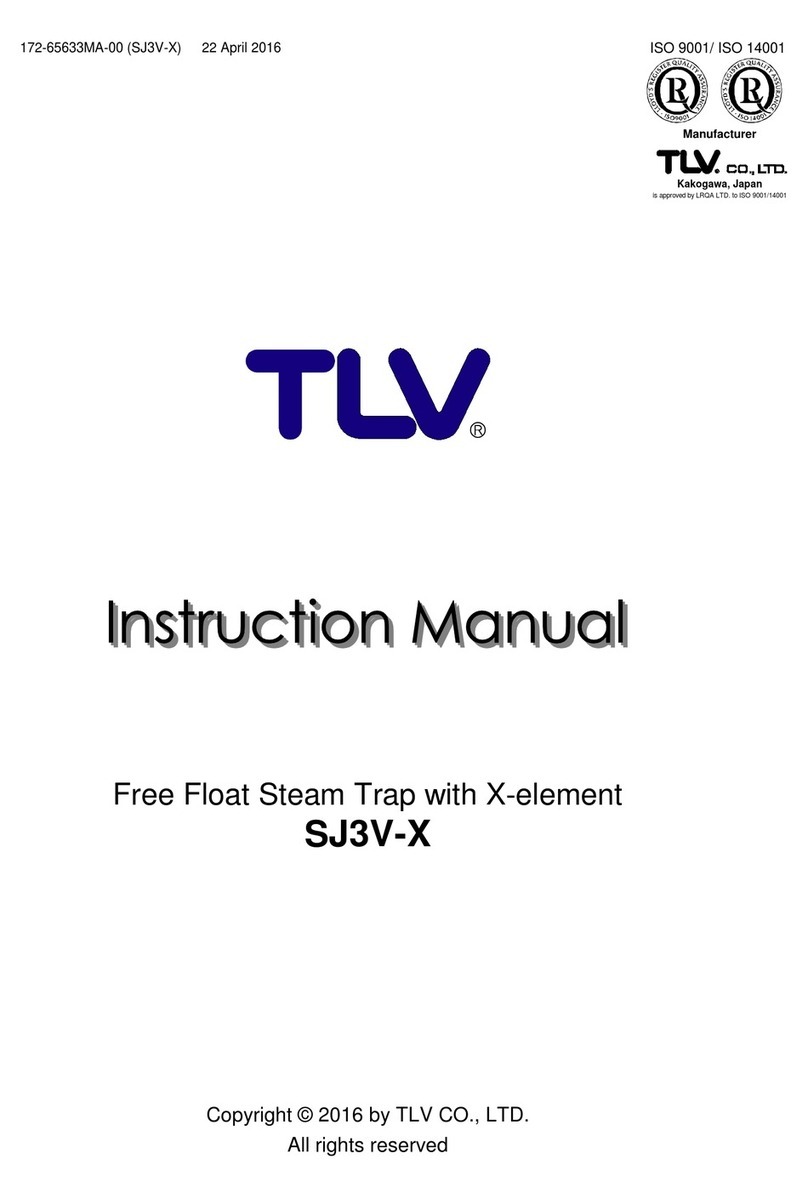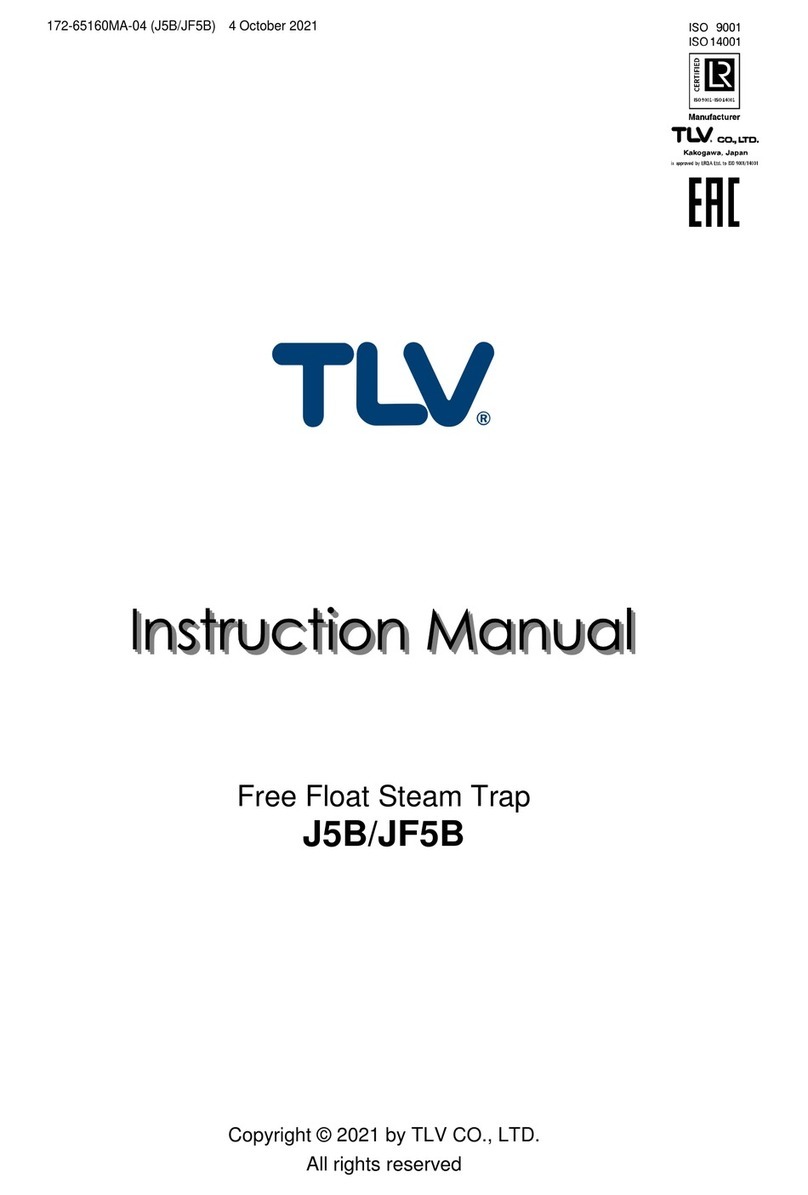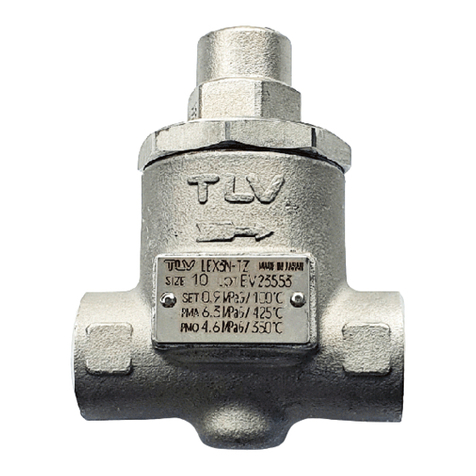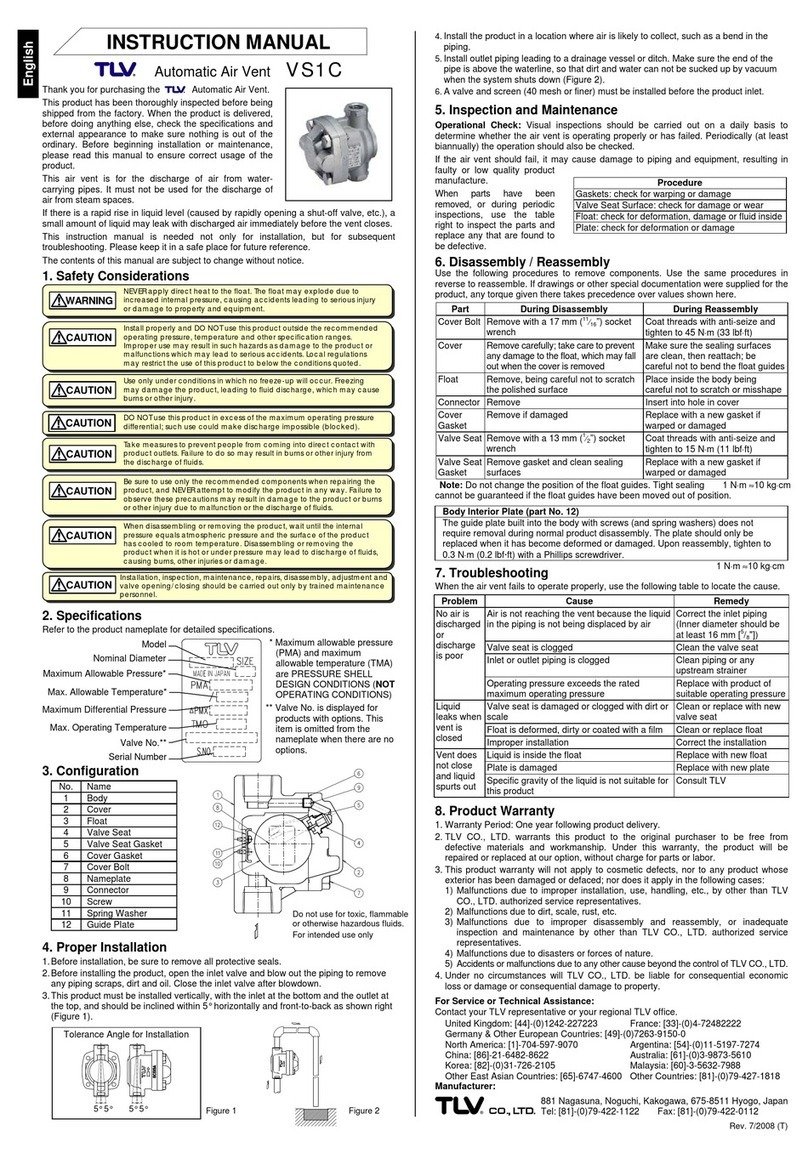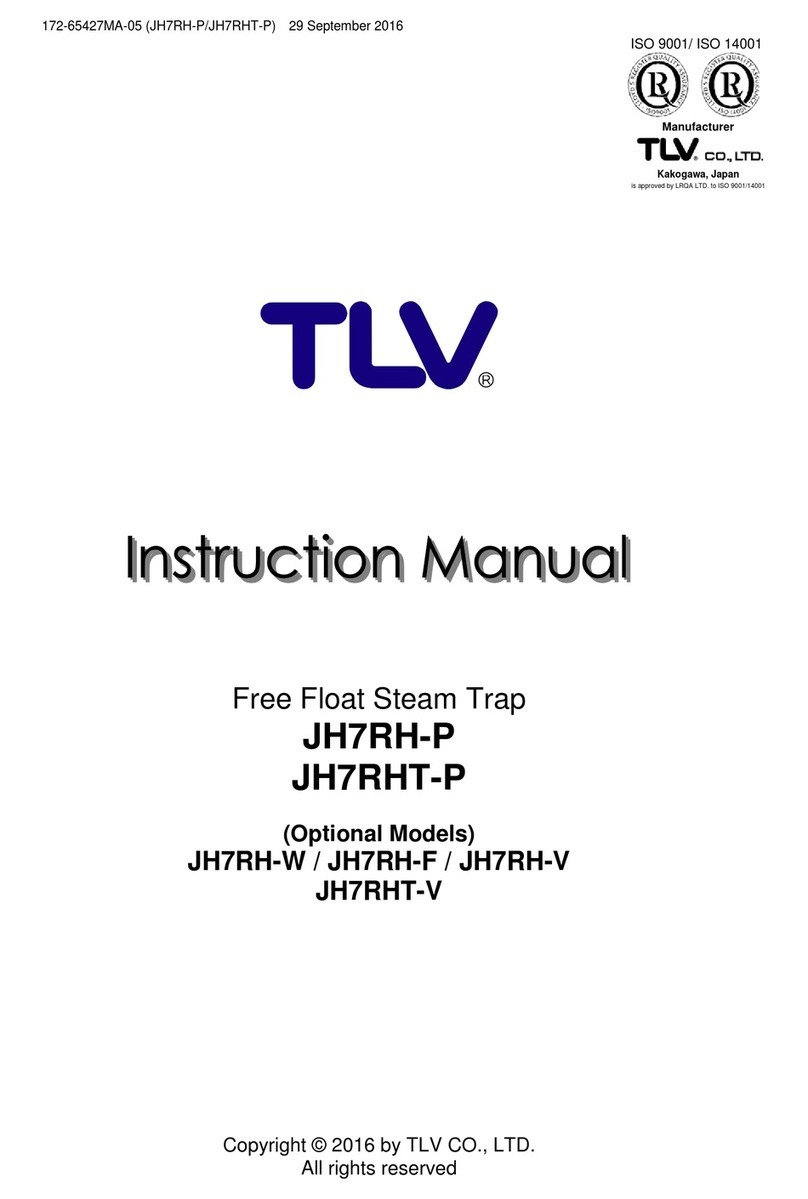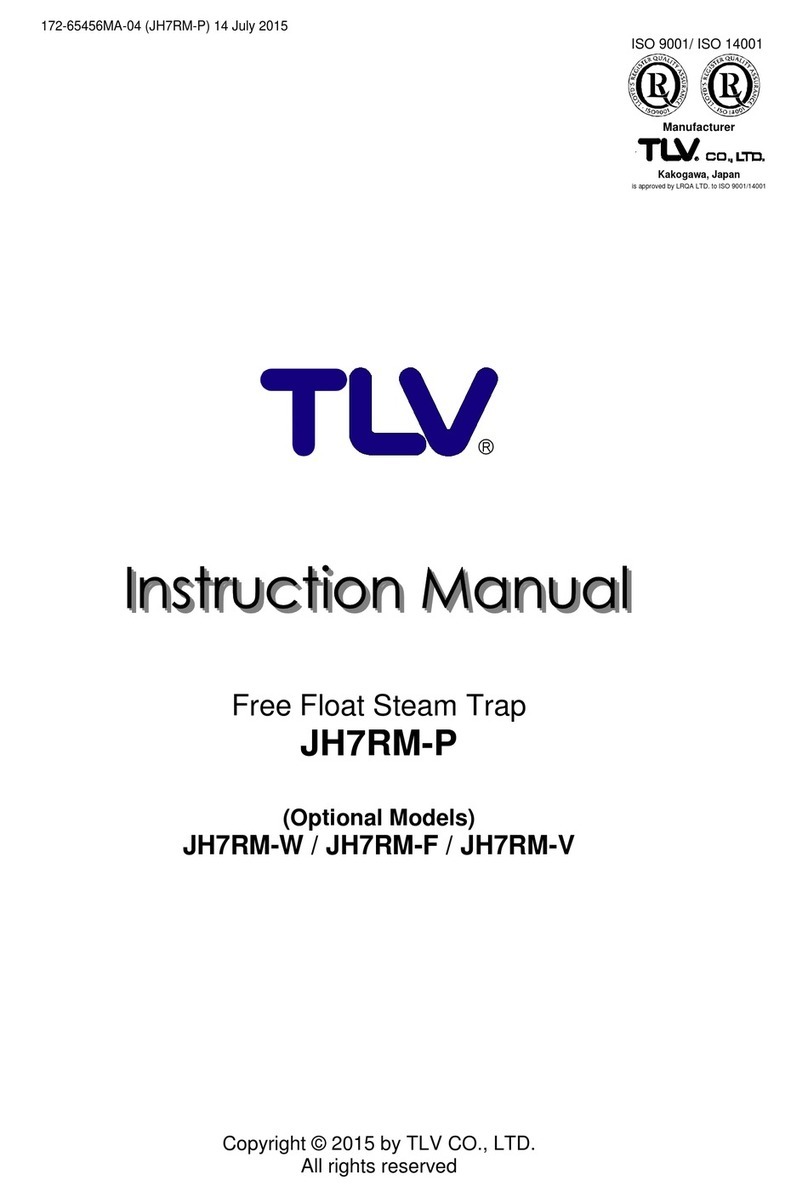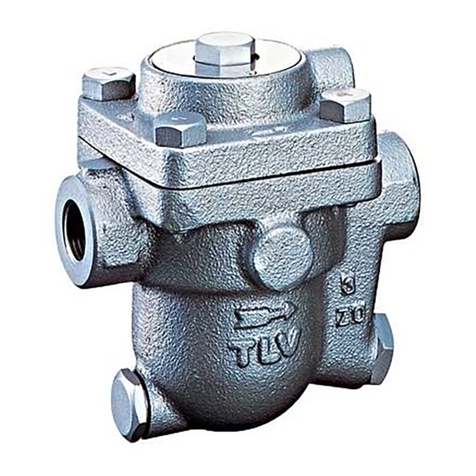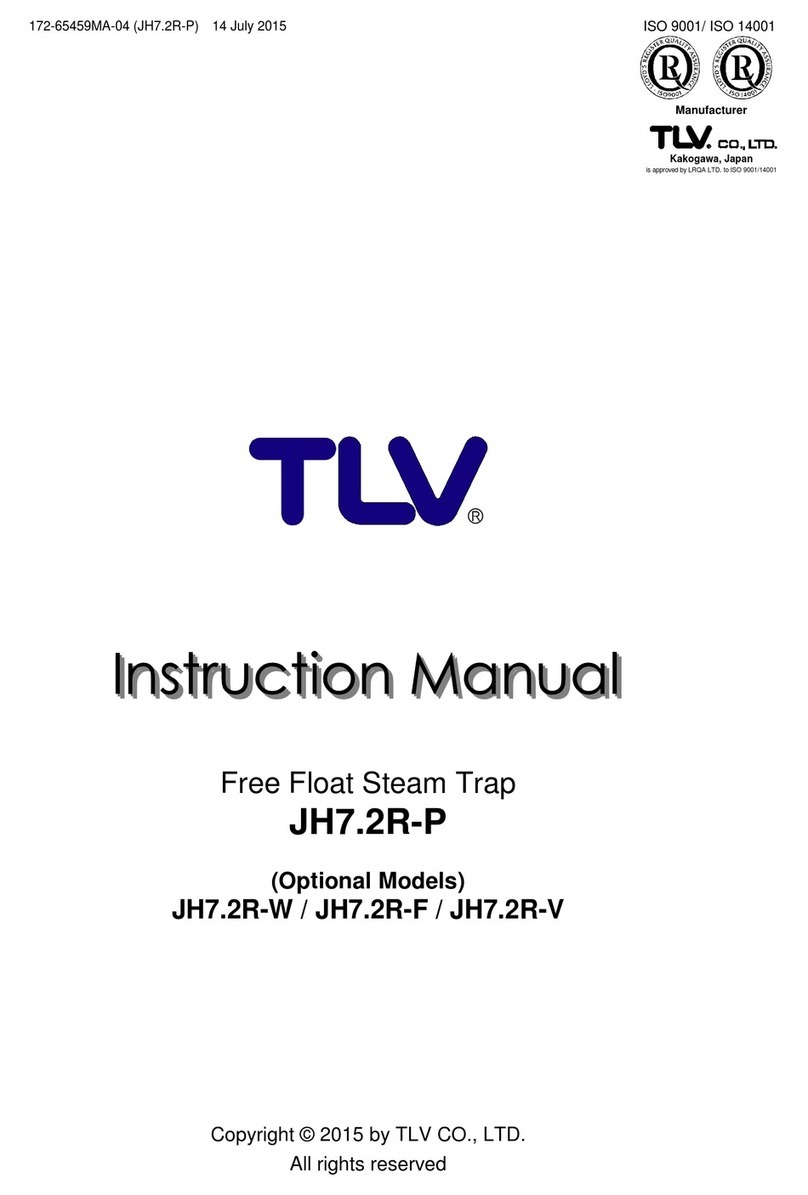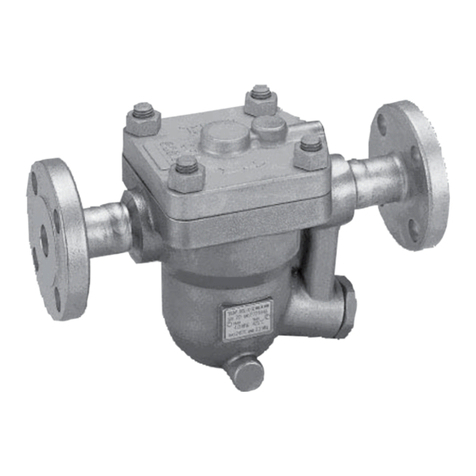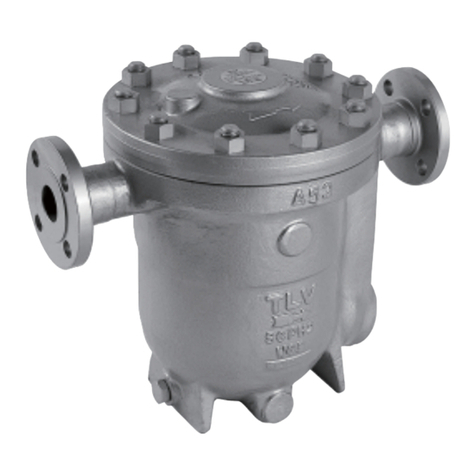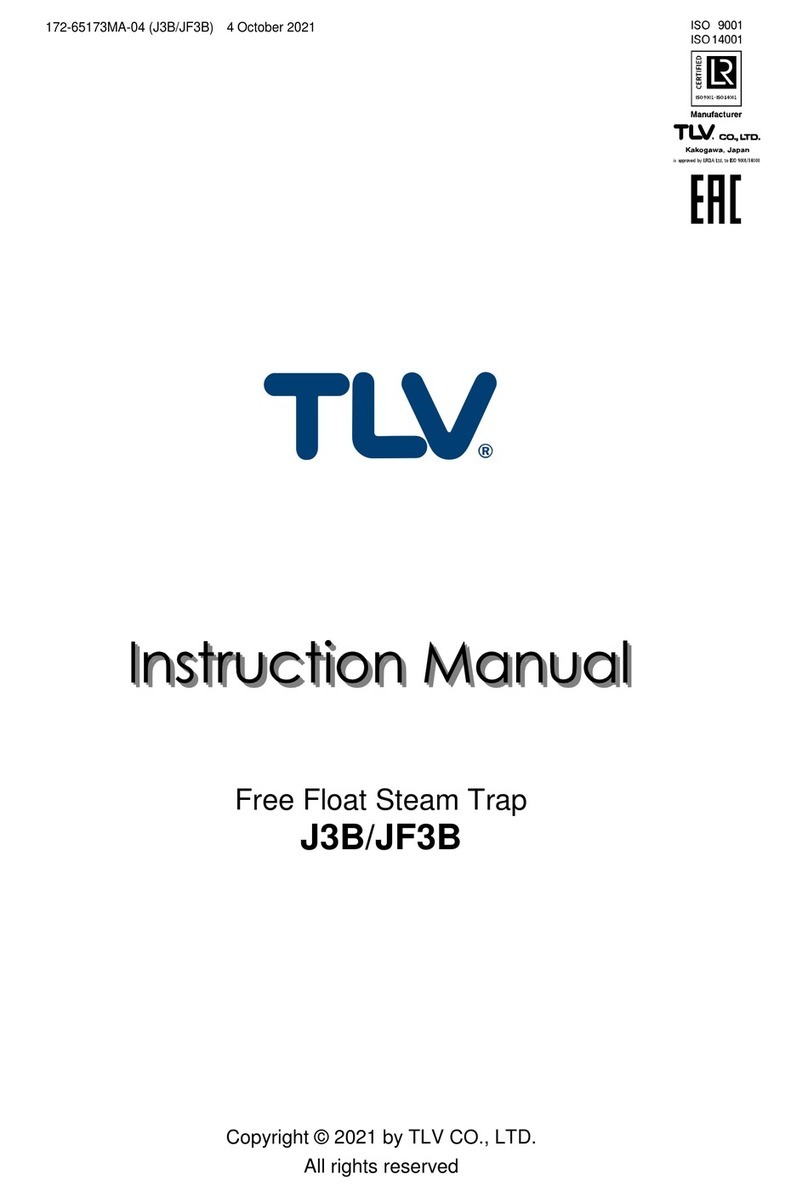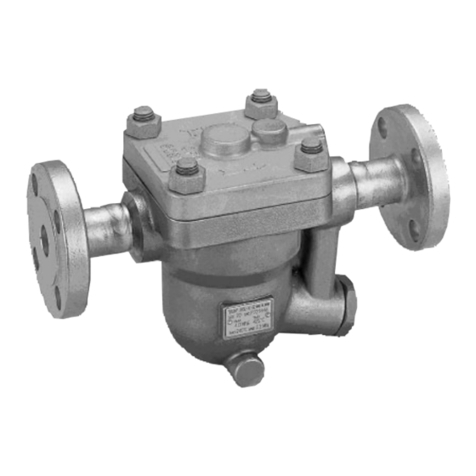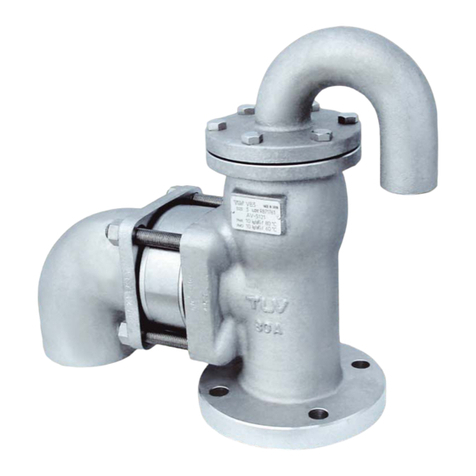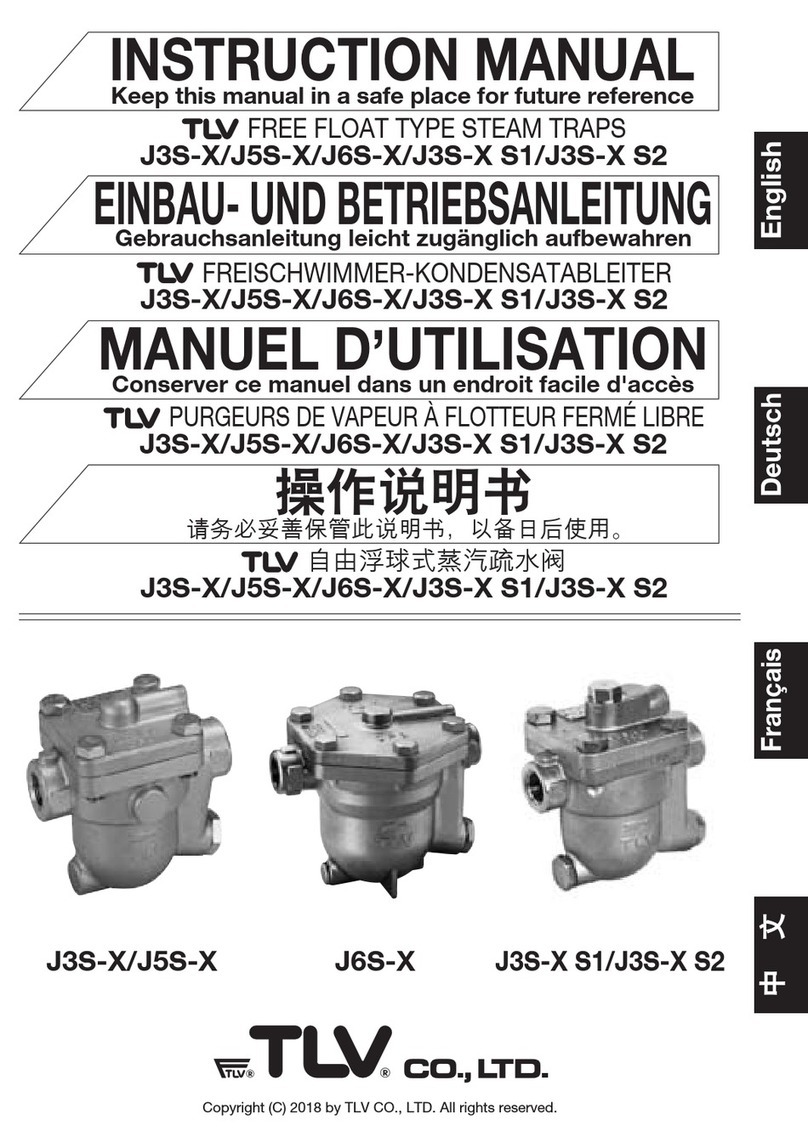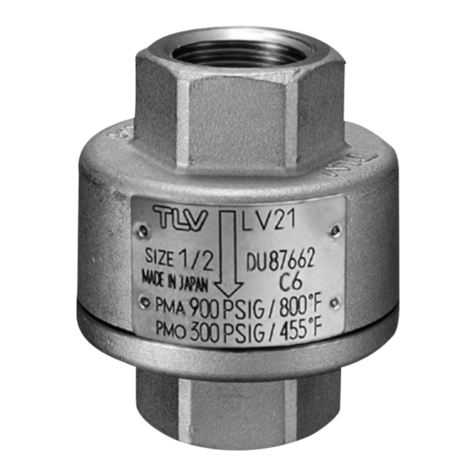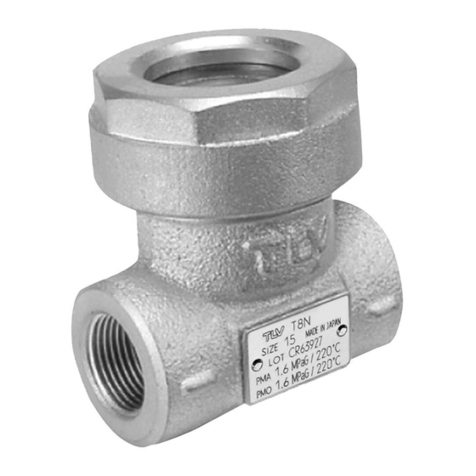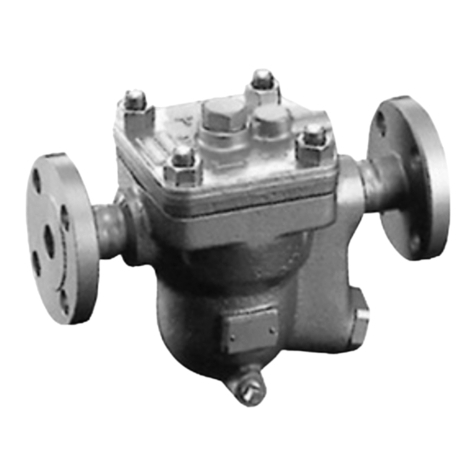
9
Disassembly / Reassembly
NEVER apply direct heat to the float. The float may explode due to
increased internal pressure, causing accidents leading to serious injury
or damage to property and equipment.
WARNING
Use hoisting equipment for heavy objects (weighing approximately 20
kg (44 lb) or more). Failure to do so may result in back strain or other
injury if the object should fall.
CAUTION
When disassembling or removing the product, wait until the internal
pressure equals atmospheric pressure and the surface of the product
has cooled to room temperature. Disassembling or removing the
product when it is hot or under pressure may lead to discharge of fluids,
causing burns, other injuries or damage.
CAUTION
Use the following procedures to remove components. Use the same procedures in
reverse to reassemble.
(Installation, inspection, maintenance, repairs, disassembly, adjustment and valve
opening/closing should be carried out only by trained maintenance personnel.)
Drain Plug (option)
Part During Disassembly During Reassembly
Drain Plug Remove with a socket
wrench
Consult the table of tightening torques and tighten
to the proper torque
Drain Plug
Gasket
Remove gasket Replace with new gasket; coat surfaces with anti-
seize
Removing / Replacing the Screen and its Parts
Part During Disassembly During Reassembly
Screen Holder Remove with a socket
wrench
Consult the table of tightening torques and tighten
to the proper torque
Screen Holder
Gasket
Remove gasket Replace with new gasket; coat surfaces with anti-
seize
Screen Remove screen —
Removing / Replacing the Cover
Part During Disassembly During Reassembly
Cover Nut Remove with a socket
wrench
Consult the table of tightening torques and tighten
to the proper torque
Cover Remove cover Make sure there are no pieces of the old gasket
left on the sealing surfaces of the body and cover
Cover Gasket Remove gasket Replace with new cover gasket
Removing / Replacing the Parts Inside the Body
Part During Disassembly During Reassembly
Float Remove carefully, being
careful not to scratch the
polished surface
Insert, being careful not to scratch or misshape
Screw Remove with a Phillips
screwdriver
Consult the table of tightening torques and tighten
to the proper torque
Air Vent Strip
(Bimetal)
Remove without bending Reinstall without bending
Orifice Remove with a socket
wrench
Consult the table of tightening torques and tighten
to the proper torque
Orifice Gasket Remove gasket If misshapen or damaged, replace with new gasket
Plug Remove with a socket
wrench
Consult the table of tightening torques and tighten
to the proper torque
Plug Gasket Remove gasket Replace with new gasket; coat surfaces with anti-
seize
172-65486MA-00 (SH5VL) 5 Sep 2012

































